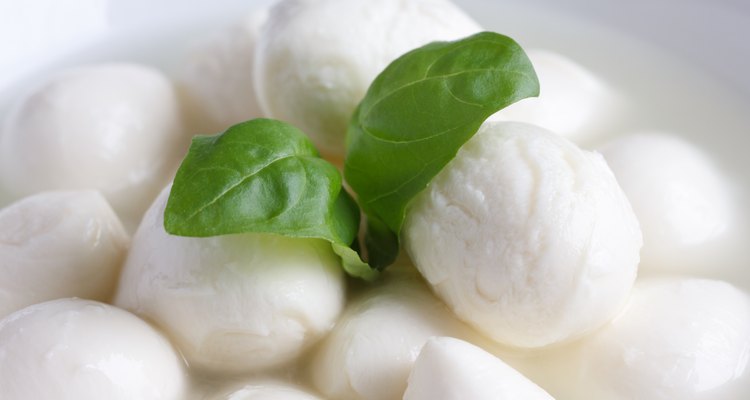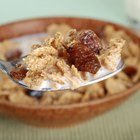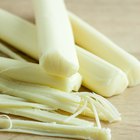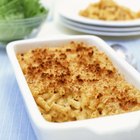
etienne voss/iStock/Getty Images
Mozzarella is a versatile cheese that's flavorful in a variety of dishes, ranging from eggplant parmesan to caprese salad. Fresh mozzarella is softer and more moist than regular mozzarella. But with the exception of sodium, the nutrient content of both types of mozzarella is similar. Reduced-fat, part-skim regular mozzarella is available if you're trying to control your calories and weight.
Total Calories
One serving of mozzarella is usually 1 oz., according to most food labels. Fresh mozzarella, such as the BelGioioso brand, has about 70 calories per ounce. According to the U.S. Department of Agriculture’s nutrient data laboratory, 1 oz. of regular whole-milk mozzarella cheese has 85 calories, and 1 oz. of regular part-skim mozzarella cheese has 72 calories. Read the nutrition label on your favorite mozzarella to determine the exact number of calories in each ounce.
Protein
BelGioioso-brand fresh mozzarella has 5 g of protein per ounce, and both regular whole-milk mozzarella cheese and regular part-skim mozzarella cheese have 6 g to 7 g of protein per ounce. The Institute of Medicine's recommended dietary allowance for protein is 46 g if you’re a woman, 56 g if you’re a man and 71 g if you’re pregnant or nursing.
Fat
The Institute of Medicine says that 20 to 35 percent of your daily calories should come from total fat, and less than 10 percent should come from saturated fat. If you’re following a 2,000-calorie diet, your total fat intake should be 44 g to 78 g per day, and saturated fat should be less than 23 g per day. BelGioioso-brand fresh mozzarella has 5 g of fat per ounce, including 3 g of saturated fat. Regular whole-milk mozzarella has 6.3 g of fat per ounce, which includes 3.7 g of saturated fat. Regular part-skim mozzarella has 4.5 g of fat, which includes 2.9 g of saturated fat per ounce.
Other Nutrients
Calcium and vitamin A are other nutrients present in both fresh and regular mozzarella. The USDA advises that you should eat 3 cups of dairy products if you follow a 2,000-calorie diet. That can come from sources such as low-fat milk, yogurt and cheese.
Sodium
The USDA recommends that you limit dietary sodium intake to less than 2,300 mg per day. BelGioioso-brand fresh mozzarella has 85 mg of sodium per ounce. Regular whole-milk mozzarella has about 180 mg of sodium per ounce, and regular part-skim mozzarella has about 175 mg of sodium per ounce.
Related Articles

The Difference Between Fresh Cheese & ...

Laughing Cow Cheese Nutritional ...

How to Freeze Tzatziki

Calories in One Slice Provolone Cheese

Calories in a Bowl of Raisin Bran Cereal

Calories in Pimento Cheese

How to Make Toasted Bread Sticks With ...

How Many Calories Are in One Cheese ...

Pecorino Cheese Nutrition

Provolone Cheese Nutrition Information

How to Bake Mac & Cheese With a Bread ...

Which Cheeses Are Lower in Fat?

How to Freeze Empanadas

How to Cook Elbow Macaroni in Milk

How to Make Fresh Strawberry Frosting ...

Swiss vs. Cheddar Cheese Nutrition ...

Calories in Bocconcini Cheese

How to Defrost Frozen Mozzarella

How Much Fat Is in Feta Cheese?

How to Cook With Havarti Cheese
References
Writer Bio
Erin Coleman is a registered and licensed dietitian. She also holds a Bachelor of Science in dietetics and has extensive experience working as a health writer and health educator. Her articles are published on various health, nutrition and fitness websites.
Photo Credits
etienne voss/iStock/Getty Images